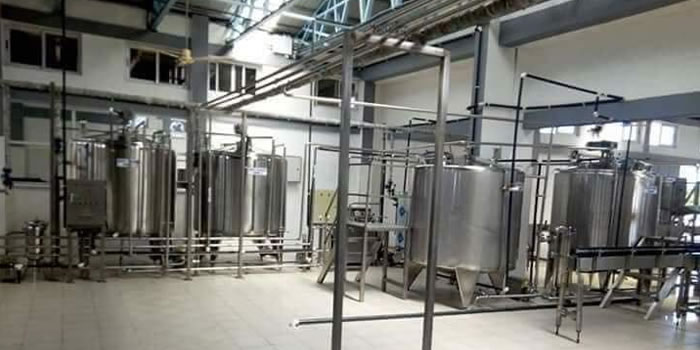

ECONOMICS
ELMINA: Fish processors root for Ahotor Oven
Fish processing is a major economic activity for a number of people particularly women in the coastal areas and other inland areas where fishing takes place in Ghana.

Date Created : 4/6/2018 8:41:57 AM : Story Author : Dominic Shirimori/Ghanadistricts.com
Their work, however, is not only business but play major roles in many homes in Ghana, as Ghanaians are known to be major consumers of fish. Thus, the method of fish processing either smoking, salting, drying, frying or whatever have been a major topic of research over the years to ensure fish served the public is wholesome and meet international standards.
Smoking fish, however seems to be the dominant method of preservation because not only does it prolong shelf life, but also enhances flavor.
It is for these reasons that fish processors in the Central and Western Regions who are into fish smoking have embraced Ahotor Oven, a new technology introduced for fish smoking.
Though the new oven appears similar to the traditionally known chorkor oven, the new technology comes with greater advantages that the fishmongers say have been their challenge over the years.
The Ahotor oven is designed to ensure complete combustion of fuel wood, and uses more heat instead of smoke as with the chorkor oven. It is designed to prevent oil from dripping into the fire and producing smoke.
The result therefore is a smoked fish with very low PAH levels, sometimes zero PH4 content which meet international standard thus allows smoked fish from Ghana to be accepted in international markets.
The Ahotor Oven
The Ahotor oven is built mainly with 5” sandcrete blocks and Portland cement. It has two combustion chambers which are partitioned and built with burnt bricks. The combustion chamber enhances efficient combustion of wood releasing less smoke.
Inside the combustion chamber is a grate that allows for more oxygen for efficient burning of wood. Series of wooden trays are stalked on the top of the combustion chamber which has an opening on top. The edges of the trays fitting very well preventing smoke leakages from the sides.
The stove also has a fat collecting system that prevents fats, water, blood from the fish dropping into fire to burn and increase PAH levels. These fat and blood are channel out and collected from outside.
The Ahotor oven can hold fish capacity of over twenty (20) trays at a time with an incorporated truncated pyramid shape chimney to the design.
For Central and Western Fishmongers Improvement Association (CEWEFIA), a group assisted by Sustainable Fisheries Management Programme (SFMP) to have experimented the use of the Ahotor oven, the results have been overwhelming and they are all for it.
So even before the new technology is fully launched, some have already constructed the facility and are currently using it for their business.
For them, though the cost for constructing the ahotor oven is a bit higher than the chorkor oven, the benefits are worth it and have vowed to do their best to completely shift to the use of ahotor oven.
In the words of the fishmongers, they have so far identified the following benefits;
• There is less use of fuel wood
• Save them from eye problems due to less smokes that is emitted
• Less exposure to heat thus reducing risks of health problems
• Very low PAH levels
• Their fish will now be accepted on the international level because of the Very low PAH levels
CEWEFIA is therefore urging its members and others in the fish smoking business to opt for the ahotor oven for a long time benefit.
SFMP has also inculcated hygienic practices of fish handling and processing among the fishmongers and in effect provided hygiene facilities as it reconstructed the CEWEFIA facility at Elmina where the fish smoking is done.
Meanwhile, Hannah Antwi, the Communication Officer for CEWEFIA disclosed that efforts are being made to provide some assistance to the fishmongers by way of access to credit facilities to help them construct the ahotor ovens. According to her, they are in talks with some banks that have shown their readiness to assist.
She also disclosed their other ways of reducing cost of the ahotor oven including converting existing chorkor ovens into ahotor ovens with minimal capital.



 facebook
facebook
 twitter
twitter
 Youtube
Youtube
 +233 593 831 280
+233 593 831 280 0800 430 430
0800 430 430 GPS: GE-231-4383
GPS: GE-231-4383 info@ghanadistricts.com
info@ghanadistricts.com Box GP1044, Accra, Ghana
Box GP1044, Accra, Ghana